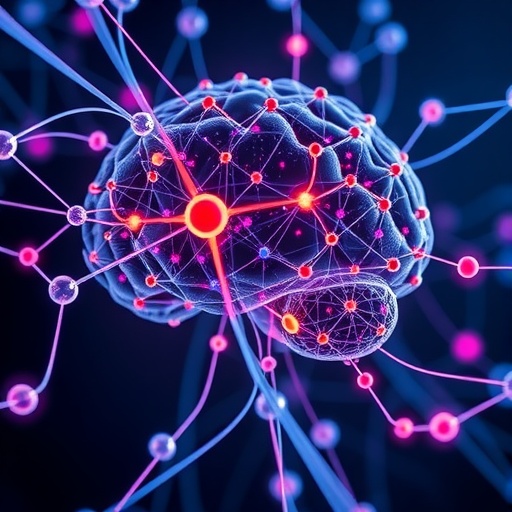In an exciting breakthrough for the world of computing, researchers have unveiled a revolutionary approach that leverages the unique properties of nonlinear phononics, specifically on the versatile platform of lithium niobate. This pioneering work, centered on synthetic-domain computing, heralds a new era for analogue computing, promising to enhance the efficiency of arithmetic operations while tackling existing challenges regarding device variability. The implications of this research could reshape the landscape of edge computing, where energy efficiency and environmental resilience are paramount.
Analogue computing has long been recognized for its potential to mimic physical processes, employing inherent material characteristics to perform calculations. However, one of its fundamental hurdles has been scaling these systems effectively due to device-to-device variations. In addressing this limitation, the researchers have introduced a novel paradigm: synthetic-domain computing. This approach allows for the encoding of vectors and matrices at distinct frequencies within a single device, effectively eliminating the inconsistencies that typically arise from varying characteristics between multiple devices. As a result, this technique harnesses the power of high throughput operations in a compact footprint, a significant advancement in the realm of analogue systems.
At the heart of this technology is an integrated nonlinear phononic platform that utilizes the characteristics of lithium niobate. This remarkable material is well-known for its nonlinear optical properties, which the researchers have ingeniously repurposed for computational tasks. By manipulating acoustic waves through this medium, the concept of combining information processing and data storage within a single entity becomes a tangible reality. Thus, the potential for developing compact, efficient computing systems is significantly enhanced, setting the stage for future innovations.
The scalability of this platform is truly impressive. By operating in the synthetic frequency domain, devices can process multiple streams of data concurrently without the interference and performance degradation associated with traditional methodologies. This concurrent encoding mechanism ensures that computational demands are met swiftly while maintaining energy efficiency—a critical requirement for applications in edge computing, where resources are often stretched.
The device-aware neural network developed through this research is noteworthy for its remarkable accuracy in classification tasks. Achieving a 98.2% success rate in a four-class classification challenge, the network demonstrates the effectiveness of the synthetic-domain paradigm. This level of performance is not merely theoretical; it opens up avenues for real-world applications that demand precision, such as autonomous systems and advanced sensor networks.
One of the standout features of this integrated platform is its robustness across varying environmental conditions. Tested under operational temperatures reaching up to 192 °C, the nonlinear phononic computing hardware exhibits remarkable stability. This resilience is particularly relevant for edge computing, where devices frequently operate outside of controlled environments. By ensuring consistent performance even under such extreme conditions, this technology enhances the reliability of systems deployed in diverse scenarios, from industrial settings to remote monitoring stations.
The research highlights not only the technical breakthroughs achieved but also the broader implications for computing architectures moving forward. With increasing demand for energy-efficient solutions amid rising computational needs, synthetic-domain computing exemplifies a forward-thinking approach that aligns with sustainability goals. This endeavor emphasizes the importance of integrating environmental considerations into the design and implementation of future computing systems.
Moreover, this work has the potential to spark interdisciplinary collaborations, as the applications of nonlinear phononics extend beyond computing. Impacts could be seen in fields ranging from telecommunications to medical devices, fostering a more integrated technological ecosystem. This interdisciplinary synergy could drive the next generation of innovations, leading to exciting advancements that span multiple sectors.
As research continues in this promising area, the importance of further exploration into the physical phenomena underlying nonlinear phononics cannot be overstated. Continued investigation may yield additional insights, revealing new methods to enhance computing efficiency and operational capabilities. The researchers’ commitment to pushing the boundaries of what is possible in synthetic-domain computing is a testament to the importance of scientific inquiry in driving technological advancements.
In conclusion, the emergence of synthetic-domain computing utilizing lithium niobate integrated nonlinear phononics represents a paradigm shift in the field of analogue computing. The potential for high-performance, energy-efficient, and environmentally resilient systems is now within reach, setting new standards for future developments in computing technology. As the implications of this research unfold, it is clear that we are on the cusp of significant changes that will enhance our computational capabilities in numerous domains.
The prospects of this innovation extend far beyond academic circles; industries are keenly interested in incorporating such technologies into their operational frameworks. Companies that prioritize energy efficiency and environmental sustainability will likely find the results of this research invaluable. Given the pressing issues related to climate change and resource management, the ability to develop computing solutions that align with these priorities will be crucial in shaping a sustainable future.
Ultimately, the integration of nonlinear phononics into computing opens a new frontier for researchers and engineers alike. As we continue to explore the depths of material science and computational theory, the possibilities are limited only by our imagination. The journey to realizing the full potential of synthetic-domain computing is just beginning, and its impact on society could be profound.
Subject of Research: Synthetic-domain computing using lithium niobate integrated nonlinear phononics.
Article Title: Synthetic-domain computing and neural networks using lithium niobate integrated nonlinear phononics.
Article References: Ji, J., Xi, Z., Thomas, J.G. et al. Synthetic-domain computing and neural networks using lithium niobate integrated nonlinear phononics. Nat Electron 8, 698–708 (2025). https://doi.org/10.1038/s41928-025-01436-9
Image Credits: AI Generated
DOI: https://doi.org/10.1038/s41928-025-01436-9
Keywords: Synthetic-domain computing, nonlinear phononics, lithium niobate, energy efficiency, analogue computing, neural networks, edge computing, environmental resilience.




